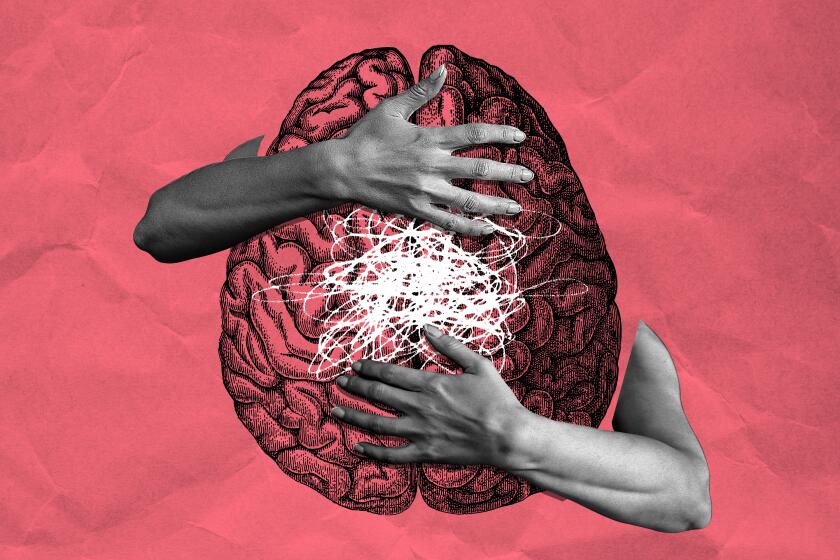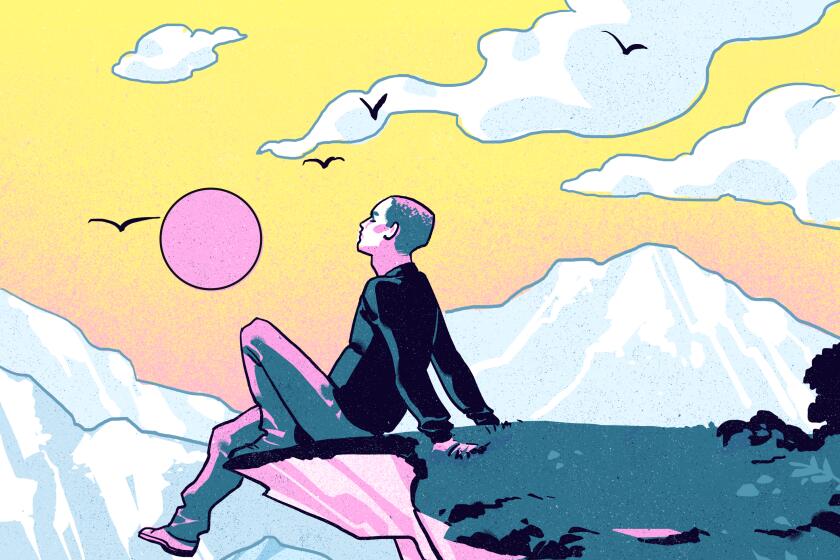
- Share via
- Researchers have identified a brain pathway that regulates breathing and calms the mind.
- It could pave the way for new medications, like a so-called “yoga pill,” to ease anxiety.
- The discovery also grounds ancient wellness practices, such as yoga and breath work, in science.
Your heart is racing, your arms are tingling and your breathing is shallow. You’re having an anxiety attack. And you’re in a public place, to boot. A crowded restaurant, say, or at the office. Not a space where you can comfortably lie on the ground and do some deep breathing exercises to calm yourself.
What if there were a pill that would instead induce that kind of calm breathing for you? That scenario might be possible after a new scientific breakthrough.
The yoga scene in Los Angeles is unparalleled. Whether you’re just starting out, on a budget or seeking something different, these studios have an option for everyone.
Neuroscientists at the Salk Institute for Biological Studies in La Jolla have identified a brain pathway that instantly deflates anxiety. The new study, which published earlier this week in the scientific journal Nature Neuroscience, lays out how the aforementioned brain circuit regulates voluntary breathing — meaning conscious breathing as opposed to automatic breathing that happens without your having to think about it — allowing us to slow our breath and calm our mind.
The discovery opens up the potential for the creation of new drugs that would mimic the relaxed state common during breath work, meditation or yoga. Sung Han, senior author of the study, says he’d like to one day see a “yoga pill,” as he calls it, on the market to ease anxiety. It would likely be useful for the more than 40 million adults in the U.S, who, according to the National Alliance on Mental Illness, suffer from an anxiety disorder.
Han says the new discovery is a real scientific breakthrough.
Researchers at UC Berkeley say a daily 20-second ‘micropractice’ can help reduce stress and improve mental health.
“As a scientist, finding something never known before is always exciting,” he told the Los Angeles Times. “This top-down breathing circuit has been a longstanding question in the neuroscience field. It’s exciting to find the neural mechanism to explain how the slowing down of breathing can control negative emotions, like anxiety and fear.”
We’ve long known that we can control our breathing patterns to alter our state of mind — when we get stressed, we might take a deep, slow breath to feel calmer. But scientists didn’t understand how that worked — which parts of the brain were actually slowing our breath and why that activity makes us calmer. Now they know that there is a group of cells in the cortex, the higher part of the brain responsible for more conscious, complex thought, that send messages to the brain stem, which in turn sends information to the lungs. That’s the aforementioned “circuit.”
The discovery validates soothing behavioral practices such as yoga, mindfulness and even “box breathing” — the latter a technique that involves repeatedly breathing in, then holding your breath, for four-second counts in order to relieve stress — because it grounds these behavioral practices in science.
Unplugging is vital for our physical and mental health, right up there with diet and exercise. We journeyed around Los Angeles to unearth some of the most immersive and creative ways to do a digital detox.
But the practical applications is what makes the Salk discovery so important, Han says.
“It can, potentially, create a whole new class of drugs that can more specifically target anxiety disorder,” he says.
These would differ from common anti-anxiety medications by more specifically targeting areas of the brain. Common anti-anxiety drugs like Xanax and Lexapro target multiple areas of the brain that control multiple brain processes and behaviors. It’s why these drugs don’t work for everyone in the same way and may create unwanted side effects. More precisely targeting an individual brain circuit makes a medication more effective and reduces potential side effects. And, in extreme cases, such a pill might be more efficient for targeting anxiety than doing breathing exercises.
“If you’re in panic, breathing techniques alone may not be sufficient to suppress anxiety,” Han says.
Han’s team is now trying to find the opposite circuit — a fast breathing circuit — that increases anxiety.
From hiking to a waterfall with Nigerian dwarf goats to a visit to a magical tea house in the Arts District, give your loved ones the gift of calm this holiday season.
“To target the slow breathing circuit, we need to understand the opposite circuit, so we can avoid targeting it,” Han says. “To relieve the anxiety.”
While Han hopes his findings will lead to a “yoga pill,” that’s likely a long ways off. The research, and ensuing clinical trials, could take as much as 10 years, he says. And nothing is for certain.
“I cannot say that this discovery is directly connected to the discovery of the new medication,” Han says. “But I can say it’s a stepping stone. We now know the pathway. That’s exciting. That is the first step.”
More to Read
Sign up for The Wild
We’ll help you find the best places to hike, bike and run, as well as the perfect silent spots for meditation and yoga.
You may occasionally receive promotional content from the Los Angeles Times.














